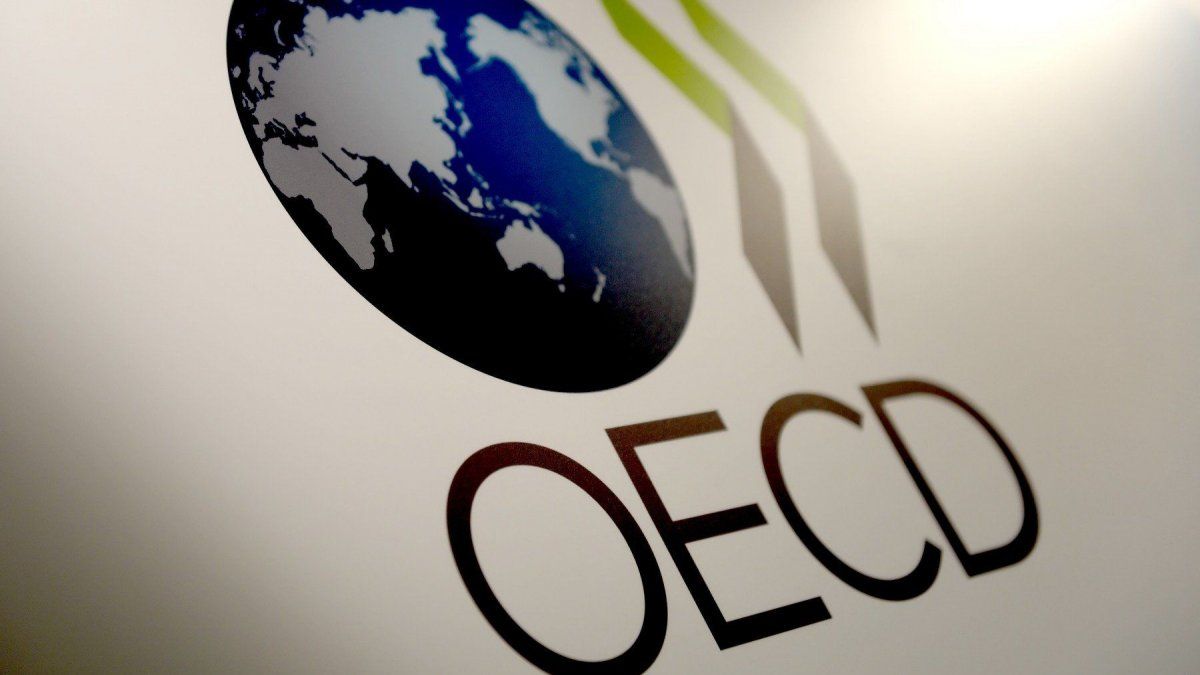The carry trade like Bayer Leverkusen
As always, different elements came together to rekindle the fire in the exchange market, but the truth is that a tenuous dismantling of positions had begun weeks ago that was accelerated after the surprising latest cuts in the Central Bank’s reference interest rate ( BCRA). Thus, the prices of financial and informal dollars began to rise. Perhaps the person who best illustrated the momentum was the economist Nery Persichini, who resorted to a very topical soccer metaphor: “With the jump in the financial exchange rate, Javier Milei’s accumulated carry trade was punctured like Bayer Leverkusen”. Now in the same period – 160 days since the inauguration – Mauricio Macri’s exceeds it 24% to 19% (when he had been accumulating more than 35%). No more words, no more explanations, no witches or suspicions, a furious disarmament of the carry trade ensued, but not only of large investors but also of small and medium-sized savers who chose not to renew their fixed-term deposits, adjustable or not, and park in a dollar that was worth 1,000 pesos days ago. At these rate levels, the carry does not yield and this was reflected in the cable dollar. The rest is history and now we will have to see how far the process extends.
In financial meetings between men in the market it is recognized that what is being seen these days is a inflection point. In the meantime, various rumors and speculations surrounding the Chief of Staff, which were already pointed out from this section, and which with the list of attendees at Luna Park fed back into the distraction on these issues. In relation to the run-run over the Chief of Staff, the acid rain that falls on Nicolas Possesyndicated by the General Secretary of the Presidency, Karina Milei, as the architect of the missteps of the Government’s management, is simply to overshadow him like the closest Mileistas of the first hour. They say at the tables that you cannot ignore that Nicolás was one of the cashiers of the electoral campaign with great autonomy but that his libertarian friend stopped referring to him as the President’s interlocutor some time ago. The libertarian internal is another ingredient, unexpected so early, that injects noise into investment decision making. We’ll see how much more noise the river makes.
Foreign exchange market: suspicions of intervention
The jump in financial and informal dollars, which widened the exchange gap to 40%, far from the PAIS tax of 17.5%, ended up impacting the prices of sovereign bonds with the correlation in the level of country risk. From there suspicions arose about certain direct and indirect intervention in the exchange market by the economic team. But what most caught the attention of a group of self-confessed carry-loving mesadinistas was the intensity of the rise in CCL, MEP and Blue without obvious catalysts. These operators commented that the entire “bad vibes” It was Argentine and could not be explained by the international context. With the latest official numbers in hand, this group, made up of some former members of the coupon lodge that enthroned the emblematic investor nicknamed “Apollo”, it was clear that The fall in the stock of Passive Repos of private banks explains the vast majority of the LECAP awarded, about $10 billion. The most experienced of the group explained that private banks have almost completed the risk rotation from the BCRA to the Treasury, so it is the public banks that now hold the majority of the BCRA’s remunerated monetary liabilities, almost 80%.
It also became clear after the tender, added another expert in monetary affairs of the group, that the private banks responded to the incentives to lengthen duration and increase exposure to the Treasury, which is why he delved into the fact that it is the public entities’ own portfolios that They need to migrate towards Treasury debt to put the death tombstone on the BCRA’s remunerated monetary liabilities. What could this imply? It was asked: that in the next tender it may not be necessary to offer such a large premium with respect to the LECAP secondary market to encourage the rotation of portfolios towards the new bills. We will see.
Another topic that these operators debated was the recent flow of money into the common investment funds known as “T+1”, which in recent days captured more than half a billion pesos. An expert in this industry explained that this originated after the BCRA rate move that increased the opportunity cost of being positioned in “money markets” funds and sureties. Despite everything, the BCRA completed the placement of the US$3,000 million of Series 3 of the BOPREAL with the last issue of 60 million (the demand was from 30.8 million companies with debts for imports and 60, 1 million for profit transfer). Therefore, the BCRA placed the maximum amount of the three Series for a total of US$10,000 million (5,000 million from Series 1 plus 2,000 million from Series 2). One of the operators pointed out that with the rise of the CCL the gap with the implicit dollar of the bond was reduced by half.
The dollar soared more than one peso and reached $38.50 due to carry trade disarrays
Exchange turbulence, protagonists of the week.
Turbulence, real economy and magic number
The exchange rate turbulence does not distract from what is happening in the real economy, and the latest official data from the EMAE chained the seventh consecutive fall, something that had not been seen in decades. Market optimists are betting that a recovery will really be “seen” in the third quarter. The fall in March was not surprising since the high-frequency indicators linked to the construction sector, which collapsed more than 40% year-on-year and another 20% in the industry, anticipated what was coming, in addition to accentuating the divergence between the EMAE agro and mining and the rest (construction, industry, commerce, etc.). A private report that was circulated among clients close to the La Ditch rugby club highlighted that the current recession is combined with a strong fiscal commitment plus the persistence of numerous exchange controls, two elements that did not exist together in other recent recessions and economic recoveries. But The main risk they encounter is that compliance with the fiscal goal – financial surplus – is rather a counterproductive element to the recovery.n, beyond the medium and long-term benefits that this may have. When it comes to talking about leaving the stocks, it seems that there is already a magic number: US$10,000 million. That is the amount that seems to be the consensus among analysts that the BCRA needs to accumulate to eliminate a large part of the exchange restrictions that still exist.
Of financiers, bankers and football
At a dinner, almost partisan from a football point of view, between financiers and bankers in a mansion in Martínez whose host has just disembarked after a rally in London, Paris and New York, they discussed the repurchase of AL 35 bonds that the Treasury made to the BCRA for more than US$1.3 billion with part of the money raised in the LECAP tender. The operation was carried out at market prices as officially reported and now the BCRA got rid of all the AL35 and has about US$2,350 million left adding the BONARES in dollars. It was a very cosmopolitan “new sharing” style dinner, the new trend, where in addition to the President’s adventures, some news was discussed. For example, the influential manager Franklin Templeton renewed its structure, catapulting Javier Villegas as Head of Iberia & Latin America, also responsible for the Americas Offshore, Brazil, Central America, Iberia and South America markets. It seems that they see opportunities in the financial sector for which they will take advantage of their privileged position in Silicon Valley. But all under the tutelage of Matt Harrison from London as new Head of Americas (ex-US), Europe & UK, Global Advisory Services who will report to Adam Spector. To understand what they are talking about, the combined region – Canada, Germany, Iberia, Italy, Latin America and the United Kingdom, etc. – represents a quarter of a trillion dollars under management.
His time at the JPMorgan Global Markets Conference in Paris, attended by no less than 700 investment leaders from 47 countries, intensified the debate on the current challenges and opportunities within the markets, ranging from geopolitics to artificial intelligence. . However, what was most talked about was the succession of JPMorgan CEO, JAmy Dimon, who anticipated that retirement is closer than ever. From the city of light to the British capital to participate in the EMTA seminar on the challenges facing the growth of the emerging markets corporate debt business, despite the strength of overall fundamentals. There was also a review of the outlook for issuances from Turkey, MENA and Latin America (including Pemex and Petrobras), and an examination of risks to the asset class. Kay Hope (BofA Securities), Stella Cridge (Barclays), Alain Nsiona Defise (Pictet Asset Management), Kofi Bentsi (PIMCO) and Declan Hanlon (Santander) spoke there. Then in New York he participated in the Latin Securities event “Argentina in New York” which brought together more than 200 meetings between leading Argentine companies and global institutional investors. There was talk of a timely reclassification of Argentina in the universe of Emerging Markets.
Speaking of funds and investments, and since the group is a football fan, a diner said that The manager Oaktree Capital Management had been left with the ownership of Inter Milan after the non-payment of a loan of almost 400 million euros. It was a three-year loan from Oaktree to the club’s holding companies that expired days ago and was conceived in the 2021 season when the club was predicting record financial losses. In these three years, Inter won its eighth and ninth Coppa Italia, won its sixth, seventh and eighth Supercoppa, obtained its twentieth Scudetto title and its historic second star, and reached the UEFA Champions League final for the first time since 2010. He said it, of course, when the topic of the failed, for now, sports societies was discussed. Cohen’s last Summit at the Four Seasons hotel was also very celebrated, which had the economist’s masterful closing Ricardo Arriazu. At the meeting, the current economy was deeply analyzed, exploring various investment alternatives and new business opportunities, and the geopolitical risks that affect the world economy were discussed and perspectives on the economic future of Argentina were offered.
Source: Ambito




